A Tale of Two Kubos: Book the Second
Welcome back! If you didn’t get the chance, I’d like to direct you first to my previous article, A Tale of Two Kubos: Book The First, and ask that you read through it thoroughly before starting with this article, or else you may find yourself very, very lost. (Although I can’t really promise you that you won’t be lost anyway, even once you’ve read the first article.)
Part one of this Bleach review left off around the end of the Soul Society arc, with Rukia having been saved by Ichigo after the rest of the heroes got themselves thoroughly trounced by the captains of Soul Society’s Gotei13, and in light of an ongoing conspiracy among the shinigami of Soul Society, unbeknown to our heroes, the whole fiasco ended with Captain Aizen of the Gotei13’s 5th Division, with two of his accomplices in tow, absconding with a magical macguffin that we were introduced to at the last minute, leaving the shinigami of the Gotei13 feeling betrayed, and Ichigo and company feeling quite thoroughly confused, along with a good portion of the audience. So we pick up now, with our turncoat captains in hiding somewhere in White-Purgatory-Pocket Dimension-Mexico, and our heroes setting back into their normal lives as super-powered high schoolers defending a town from monsters embodying the negative emotion of remorseful souls of the dead.
It is at this point that two very important concepts are introduced. First are the Vizard: shinigami with hollows powers, further blurring what line there was left between the finite concept of “good” and “evil” that the story had started with -in fact, even the initial idea of the hollow’s being inherently violent, born of negative emotions, and essentially the embodiment of human vice, gets turned on its head by this point- and second we’re now formally re-introduced with the Arrancar, hollows who shed their monster forms to take up shinigami swords and humanoid bodies. Yes, that’s right the monsters aren’t even monsters anymore, they’re humanoid like everything else. Suck on that, Jump editors! Nobody puts Kubo in a corner!

To further drive home this idea of Kubo’s contempt for the attempted censoring, I’d like to point out that Kubo introduced the first Arrancar in chapter 25, before even Renji or Byakuya had shown up, and before the idea of swords having spirits or release forms had even been introduced. That’s right, Kubo planned all along for his goofy looking polka-dot monsters to turn into humans, and he managed to slip the whole ploy under the radar without Jump noticing a thing. Of course, by the time any of this could even potentially come up for question or debate, Bleach was a successful title, one of what has been dubbed the “Big 3” standing on top of Jump’s polls. At this point Kubo had secured his right to do what he pleased with his manga, so long as he kept clear of certain obvious boundaries. That said, the two arrancar to appear along side GrandFisher in chapter 25, who went unnamed for nearly 200 chapters both appear later with slight changes to design and are introduced with proper names. The first, with the crab-shaped skull is numbered 16 among the arrancar, Di-Roy Rinker, and the man with the bird-like beak is number 17, Aisslinger Warner.
Although I think it is worth pointing out that Kubo is nothing if not a daredevil when it comes to pushing the limitations of what can be deemed reasonable and appropriate, and if there ever was a need for evidence, I’d say Kurotsuchi Mayuri was the earliest sign* of Kubo’s willingness to play with the questionable. Giant nightmare fuel baby-faced caterpillar monsters, just one of many, many lost arms in the series accompanied with a gruesome growth of a new arm to replace it, subjects of merciless domestic abuse, sadistic torture, mass genocide, brutal mutilation, and then of course the crowning moment of pushing the line with “kid friendly” where Kubo first introduced Mayuri by having a small group of people explode in a bloody mess in chapter 120, only to then take the time to open up chapter 121 with the background story of one of Mayuri’s human bombs, just to let us in on all the hard work and unfulfilled dreams that were about to literally go up in smoke.
*(Ok, fine so technically the hollow Shrieker, from volume 2 was the first sign that Kubo might be a little grittier than the usual shounen title; what with him being a crazed serial killer mentally abusing a small child. Even then, Shrieker was quickly followed by NumbChandelier in volume 5: the hollow that took control of Orihime’s friends through the gory insertion of giant seed/missile things, caused gross disfigurations of the body, and resulted in the first of Orihime’s many reoccurring beatings as well as a very zombie-style mob of brainwashed humans shambling after Orihime and Tatsuki. In any case, neither of them were nearly as interesting as Mayuri’s carnival of body horror tricks, caterpillar baby, and blowing up innocent people.)
Oh, and I might as well make a point of this before we finish up with Mayuri, but the fight between Mayuri and Uryuu marks the loss of arms as an unintentional ongoing trend with Bleach. The first arm lost was Rukia’s in the fight with FishBone-D in chapter 1. Then Jidanbou, the giant guarding the Western gate of Soul Society lost his arm to Ichimaru Gin in chapter 74. Shiba Ganju then had his arm cut open and crippled in an encounter with Kuchiki Byakuya in chapter 116. Kurotsuchi Mayuri then severed his own arm at the start of his fight with Uryuu in chapter 122 and subsequently paralyzed and cripple Uryuu’s arm in the chapter following. Mayuri then lost his arm again from a shot from Uryuu’s Quincy final form in chapter 125. Also once the human heroes return to the real world, Orihime is covered in bandages, and has one arm in a cast. This makes 7 times that characters have had the use of an arm stripped from them in combat as a way to convey serious damage done, although due to just how frequently it seems to happen, it has become something of an inside joke among Bleach fans that losing limbs is just a minor flesh wound, and that having arms grow-back or be reattached is a fairly common procedure in the magical world of Bleach.
Jokes aside however, if you’re wondering exactly why Kubo seems to have this habit there actually is a fairly logical reason for it. When writing a battle manga, the biggest problem is that the characters are naturally prone to cuts, bruises, and a whole lot of blood loss. So, when the time comes for a big fight and it needs to be made clear how strong someone is, the normal level of battle damage just doesn’t “cut it” so to speak.
Now, keep in mind that the author wants to avoid any lethal injury, for the obvious reasons of not wanting to kill off one of the characters and end the whole fight early, and more than that, the hero will more than likely end up shrugging off his wound(s) as he pumps himself up for the final round of the fight where he inevitably turns everything around. So, when it comes to big, but non-lethal injury, that leaves the hero still battle ready, there’s really only a few ways to go about it; you either cut off an arm that’s not being used, or land a big looking wound somewhere away from all the vital organs. Broken ribs are also a popular choice.
So then, I’d like to say that we’re getting back to the story now, but I do have more tangential rants to embark upon first, and I, of course, have every intent of keelhauling you all along for the whole of the trip. This tangent is going to address the Bount filler arc from the anime, which rears its ugly head between the return from Soul Society and the introduction of the Vizard.
My first gripe with this is when Renji appears as a new transfer student, inexplicably dressed like some sort of hippie. So, to begin, there is absolutely no reason for him to be showing up as a hippie and as I’ll get into later there are serious inconsistencies in regards to stylistic choice with this. In any case, Renji explains that he has been stationed in Karakura because of reports of a new sort of enemy, which turn out to be the source of the worldly tales of vampires: this may well be the first red flag to look for, given the recent popular trend of butchering vampire lore.
Now, granted this preceded the true height of the vampire craze by a year or so, but the same basic violations still occur, although with some small exception: For one, there was never any need for them to be vampires, so it is fairly clear that the vampire move was made purely as an attempt to hop on the bandwagon. However, the fact that the Bount are explained as being the basis of human myth, and not overtly vampires exactly as told in folk lore, was actually a fair explanation. The character designs however were horrendous, and despite some speculation that Kubo may have designed the characters himself and even written a basic plot, there would seem to be evidence to the contrary.
For one, the character designs conflict heavily with Kubo’s otherwise impeccable sense of style. While Kubo may later succumb to a number of shortcomings as a storyteller and arguably even as an artist, his uncanny (and totally unnecessary) eye for fashion design remain forever one of his stronger talents. That said, the Bount designs are absolutely hideous, not only in terms of the over all designs, but even when broken down into specific details, and the color schemes are all entirely unlike Kubo’s doing.
Chief offenders of this fashion faux pas would be Hou and Ban, the twins with the water doll, Mabashi the orange haired boy with the flower doll, Koga Gou the large bearded man with the metal doll, and Yoshi the woman in the china dress. The biggest problem with most of these are horridly flat designs, aided in their failure by the drastic cut in budget during this arc, taken most likely as added funds toward the first Bleach movie that was in production at the time. Aside from being bland and often impractical looking outfits, the choice of color were most often not merely ugly but high contrast, on distinctly opposite ends of color spectrum and clashing warms with cools and lights with darks in ways that were just generally unappealing.
Kubo has shown in his many chapter covers, color spreads, and popularity poll illustrations that he has a firm grasp on basic color theory in fashion: he picks a single color to be most prominent in the design, usually either in multiple items or as the top piece, and relegates drying and less attention grabbing colors to non-central articles of clothing like off color pants or head wear. Any addition color he uses as subtle accents with accessory items, always making a point of keeping just one single color as the center of the ensemble. Looking back at the Bount I think you’ll notice that in most outfits there is no single color or item of clothing central to any of their outfits and more often than not the colors are not suitably balanced and instead drag your attention around aimlessly.
He can do casual
He can do formal
He can do semi-formal
He can do alternative Chinese
He can do winter wear
And if you can ignore the gratuitous fan-service long enough, you might notice he can even do unique and diverse summer swimwear
Even ignoring the obvious difference in detail between an animation ready model and a singular illustration, you can see the distinct difference in style between the Bount’s outifts and Kubo’s usual modern-wear.
Putting away the fashion police siren, I’ve typed the word “BOUNT” out enough times by now for me to be very noticeably upset about it. It bothers me greatly that the official romanization of their name came out to be Bount. For those unfamiliar with the Japanese phonetic system, there is a certain kind of relationship between particular sets of sounds where similar hard and soft sounds share a root character in writing. In this case I’m of course referring to the fact that the “to” in “Ba-u-n’-to” and the “do” are written with nearly identical characters.
So, given the fact that a bunch of spirits made and cast out from Soul Society (the heaven equivalent of the Bleach world) and subsequently stranded on Earth with no way back could perhaps be adequately described as being “Earthbound” or perhaps even just “Bound”, a term not at all uncommon when referring to spirits unable to cross over into the afterlife, it seems fairly likely that the name was intended to be “The Bound” in the first place, but for whatever reason, in whatever way, things went wrong at some point.
In case you are wondering, I’ve taken the liberty of checking myself, and as best as I can tell none of the following: Baunt, Bount, Baunto, or Bounto are any sort of words in English, German, Spanish, or Latin, thus ruling out any and all odds of it being a name fit to one of Kubo’s thematic languages. I have heard on occasion the argument that there may have been some desire not to use such an obviously self defining word, but when the other 3 factions running around are named very literally “Death God”, “Torn Mask”, and “Mask Soldier” I think that argument fails to hold water outright.
The plot of course is littered with holes and general nonsense, but my biggest two gripes being that the Bount arc not only brought Rukia back from Soul Society after her goodbye to Ichigo, but also gave Uryuu back the Quincy powers he had lost in his fight with Mayuri, even if only temporarily. By doing both of these things prematurely and then trying to reset the status quo at the end of the filler arc, the moments at which Rukia returns in the actual story and Uryuu is offered his power back by his father lose all impact as the suspense over both questions of whether Rukia will come back and whether Uryuu will ever fight again are ruined.
The fact that the Bount are experiments gone wrong that are supposedly immortal, or at least share their shinigami progenitors’ longevity, and that their dolls are implied to be variations on the sword spirits of the shinigami they were based off of, make little sense given some of the convoluted abilities and honestly feel like the sort of trash I’d expect to see on some tiny role playing forum lost in the backwaters of the internet.
And then, of course, is also the issue of Ran’Tao bringing out some sort of dorky looking gun. It should be noted that while Bleach’s continuity doesn’t expressly exclude guns, it is very much stylistically inconsistent, even in the hands of a scientist. Keeping in mind that even with his bizarre weaponized altered body, even Mayuri never used anything that fired bullets.
Even further, there’s the issue of the awkward work around with Kariya and the rest of the Bount being worked into Bleach’s delicate power scale. I’ll explain t now for those who understand the basic idea, but when you have a battle series like Bleach, there is a very precarious hierarchy of power established that inevitably comes under scrutiny.
So when and author builds his cast of characters every new character must then logically fit into some niche between two other characters in regards to who is stronger/strongest. But while every other character, and most notably the villains/antagonists are almost always stationary on this ladder, the hero(s) will always gradually ascend said ladder through a series of power ups attained either through training for a transformation, new techniques, or both.
In Ichigo’s case he undergoes one of these for every major battle he fights, and so to add in an entire new story arc in which the starting and ending points on this power scale must remain consistent for the story to resume itself, there comes to be a very big problem: the villain must be a threat, but the hero can’t gain a new power he isn’t supposed to have. How then do we make a viable threat out of the villain without letting the hero make any progress on the ladder of power?
The answer? We give the villain a very, very specific power that hinges on a singular gimmick that can be deconstructed in order to strip him of his power and render him totally powerless. The fault of this, of course, is that the hero inevitably does not over come the villain himself, making the entire adventure sort of stagnant and given that, as filler, no serious character changes can be made, let alone kept within continuity, the entire story becomes null and moot.
Anyhow, getting back to the story, once we move past the Soul Society Arc we start to get at what inevitably became the downfall of Bleach, as the foundations of Kubo’s storytelling slowly began to bend and creak. The introduction of the Vizard and Arrancar opened up a whole new can of worms, as the Arrancar had their own sword releases that followed a different set of guidelines in terms of design. That all, however, is a story left for another week! That’s right, my filler review was in fact filler itself! Suffer under the weight of my pretentious, witty meta-commentary! Suffer, I say! SUFFER!!
Assuming you haven’t had enough abuse I’ll be back next week to wrap up what it left to cover in this mess of a review, and if it doesn’t drag on too long, I’ll take the time to explain my theory as to why Urahara is the inevitable final boss of Bleach.
Until next time, suckers! >:P



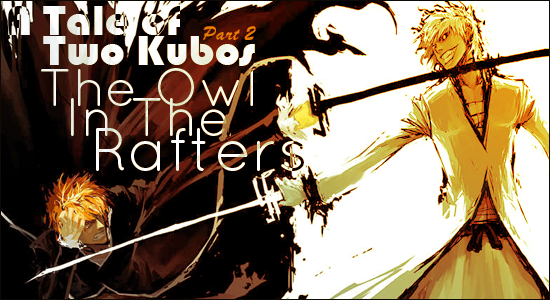
![[M7]Bleach-ch183-19 Eyes of the Unknown](http://918thefan.com/wp-content/uploads/2010/11/M7Bleach-ch183-19-e1288817254455-300x222.jpg)
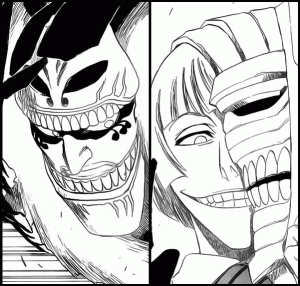
![[manga-rain]bleach-ch116wall-milkberry Kurotsuchi Mayuri](http://918thefan.com/wp-content/uploads/2010/11/manga-rainbleach-ch116wall-milkberry-e1288819366822-119x300.jpg)

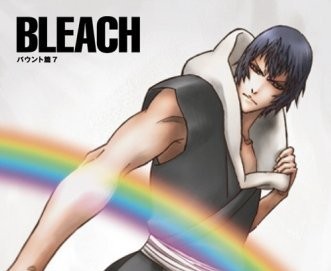
![[DB]_Bleach_75-76_Special (take images - end of Friido) BE AFRAID BE VERY AFRAID](http://918thefan.com/wp-content/uploads/2010/11/59843075a404b301fb351582f630bd5d-300x225.jpg)
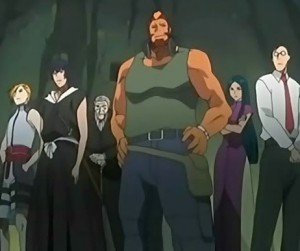
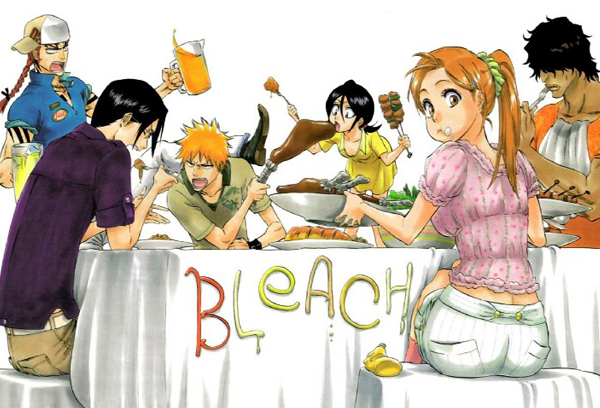
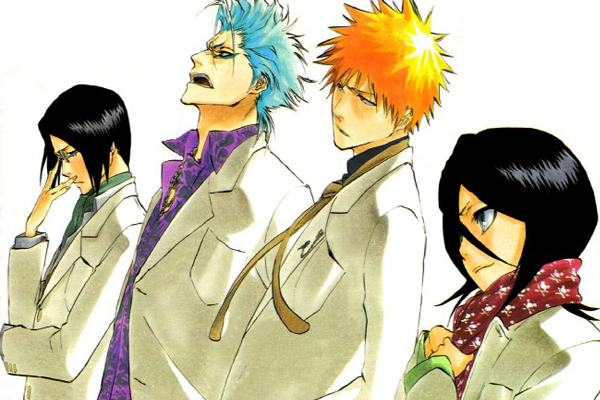
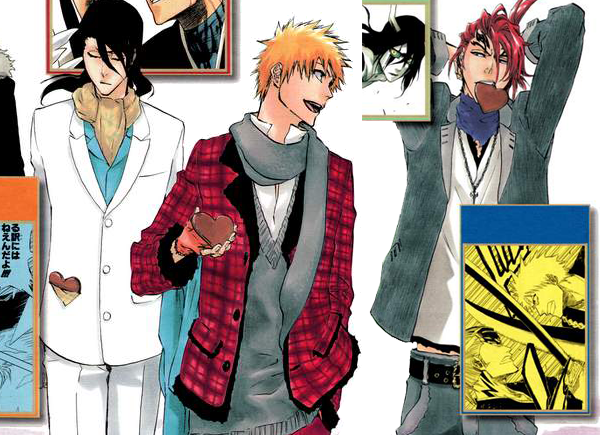


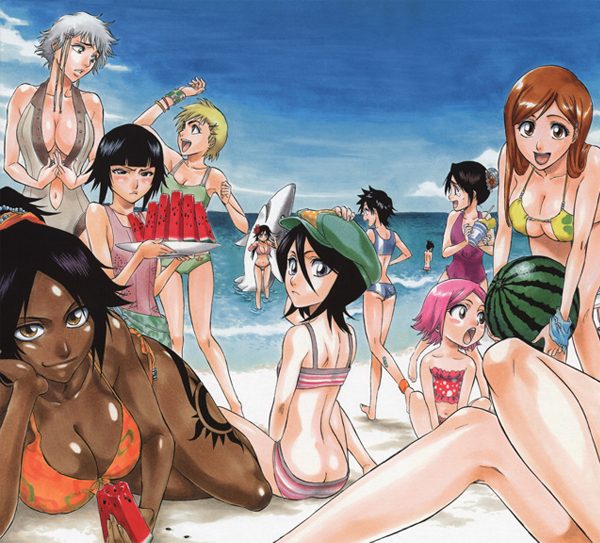
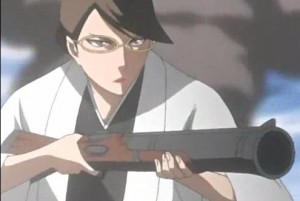

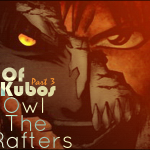
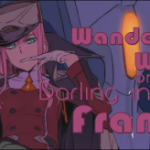











1) Mayuri…heck yes, yo! 😀
2) Ran’Tao=Sarah Palin
3) I am lovin’ these articles 😀
Awesome article – I’d missed part 1 some how so made sure to read that first. 😆 a magic McMuffin huh wow.
Perhaps typical of the genre but in the Arrancar arch he sure seemed to stress the “I need to get stronger” at nearly any cost and justified any action…so is Tite an artist just trying to sell or does he have anything to say?
Oh I think he has plenty to say, and he always manages to find somewhere to fit his own little ideologies and rants into things, but they never seem terribly central to the plot and always stay on the tangential side of things, which I think is a good idea. After all, you put too much ranting into the plot and you wind up seeming preachy, like Naruto and his nonsense in the fight with Pain.
In particular the 4 tower fights in the Winter War/Fake Karakura Town Arc are prime examples. Nnoitra Gilga and Szayelaporro Granz’s fights as well. All 6 or so fights ended with Kubo going on genuinely interesting little rants through character voice on principles of attitudes towards violence, vanity, arrogance, professionalism, fighting “dirty” -vs- fighting “fair”, and intelligence.
I could go on forever, obviously that’s why I’m writing articles, but Kubo’s definitely a clever guy with a decent head on his shoulders, he just seems to have some organizational problems later in his career.
All very interesting. I guess I often have a hard time getting past Bleach as little more than an edgy Naruto with a bit more style. Similar shonen messages with less morality (than Naurto). I’m sure that’s a bit short-sighted but hey perhaps the Owl can help me understand.
Maybe a little push to include some more of your ideas of his message or philosophy in the next installment. Looking forward to it…
“Until next time, suckers! >:P” but I cant wait that long ^~^
I demand Mashiro cameo, Mr Tyto.
I just luv how Bleach goes back to its roots after the Aizen fight. i prefer the original Bleach to just the hack and slash brutal beat-downs.
There is a very high moral questions behind Bleach. Kubo asks us what is right and wrong? What truly is justice? Is Justice the law or what our hearts tell us is right? What is true good and true evil? This is what sets Bleach apart from other manga titles, I love the article. Not a lot of people are aware of the higharchy that is shueshia and the policies it has against excessive, and unnecessary violence and what Kubo has to work around. Plus the main function of the arrancar arc was to introduce perhaps future allies(Grimmjow has never been confirmed dead and it would not surprise me if he pulled a Vegeta. Nel also was confirmed to be alive in volume 39, her fracciones are also alive and Gantenbainne was healed by Unohana), it eliminated Gin and Tosen so Aizen is all alone now, at it set up what will likely be the final two arcs of Bleach. The final battle will take place in the Royal Realm(Kubo has confirmed he will introduce Squad 0 very soon) and Orihime will kill Aizen, because it has been hinted at countless times, especially with the line “I will erase the Hogyoku’s existence.” For you anime-only fans in episode 295 something is revealed about Aizen and the Hogyoku. I mean Kubo always has a rhyme and reason for everything, although it seems like he makes things up as he goes along(which he does) but there is some plot structure that has been carefully planed out. A great example of this is a comparison between chapter 129 and chapter 415(which by the way has emotional warped me now, and what looks like what happened is what happened, as sick as it is, that is what happened).
Wow, to tell you the truth, I am really enjoying this article. It gives readers deep insights of the manga series and it’s author.
And I agree with most comments posted before me, because I do believe that one of the last story arcs will take place in the Royal Realm.
And I somehow think Kubo might end up recycling Aizen.
But I got one question: If Grimmjow pulls a vageta will that mean there will be a possibility of getting a look at his “segundo etapa”?
Honestly, the odds of Grimmjow reappearing at all are next to zero. Despite his popularity there’d just be no functional purpose to it, and when Kubo went as far as to absentmindedly write Nel out of the story by just leaving her behind, there’s really no reason to believe Grimmjow or any other of the Espada will be making any kind of reappearances beyond flashbacks. However there have been vague rumors that the Hell Arc movie to be released this year could have a few old villains come back.
[…] and artist of BLEACH, before moving on with the new article: A Tale of Two Kubos: Book the First … Book the Second and … Book the […]
[…] further elaborate on where I’m going with this; at the end of the second part of my lengthy Bleach rant, I sort of promised to divulge a bit of my withheld inner Bleach fanboy […]
[…] of the Bleach anime/manga? If you don’t, may I suggest reading Bismarck Kamen’s three part series on Bleach? That's Nel Tu! She's so […]